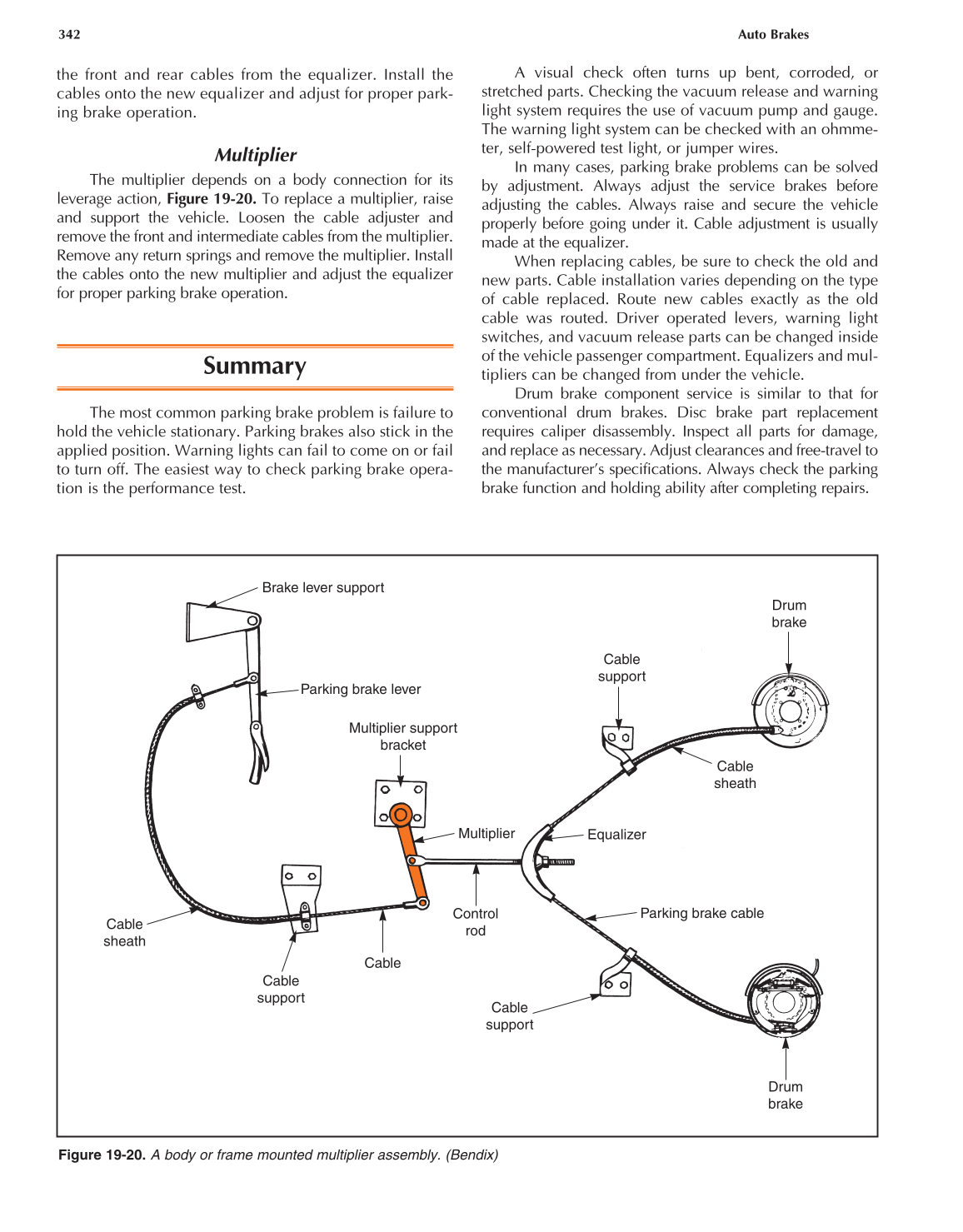342 Auto Brakes
Figure 19-20. A body or frame mounted multiplier assembly. (Bendix)
Brake lever support
Parking brake lever
Cable
sheath
Cable
support
Cable
Control
rod
Multiplier
Multiplier support
bracket
Equalizer
Cable
support
Cable
sheath
Drum
brake
Parking brake cable
Drum
brake
Cable
support
the front and rear cables from the equalizer. Install the
cables onto the new equalizer and adjust for proper park-
ing brake operation.
Multiplier
The multiplier depends on a body connection for its
leverage action, Figure 19-20. To replace a multiplier, raise
and support the vehicle. Loosen the cable adjuster and
remove the front and intermediate cables from the multiplier.
Remove any return springs and remove the multiplier. Install
the cables onto the new multiplier and adjust the equalizer
for proper parking brake operation.
Summary
The most common parking brake problem is failure to
hold the vehicle stationary. Parking brakes also stick in the
applied position. Warning lights can fail to come on or fail
to turn off. The easiest way to check parking brake opera-
tion is the performance test.
A visual check often turns up bent, corroded, or
stretched parts. Checking the vacuum release and warning
light system requires the use of vacuum pump and gauge.
The warning light system can be checked with an ohmme-
ter, self-powered test light, or jumper wires.
In many cases, parking brake problems can be solved
by adjustment. Always adjust the service brakes before
adjusting the cables. Always raise and secure the vehicle
properly before going under it. Cable adjustment is usually
made at the equalizer.
When replacing cables, be sure to check the old and
new parts. Cable installation varies depending on the type
of cable replaced. Route new cables exactly as the old
cable was routed. Driver operated levers, warning light
switches, and vacuum release parts can be changed inside
of the vehicle passenger compartment. Equalizers and mul-
tipliers can be changed from under the vehicle.
Drum brake component service is similar to that for
conventional drum brakes. Disc brake part replacement
requires caliper disassembly. Inspect all parts for damage,
and replace as necessary. Adjust clearances and free-travel to
the manufacturer’s specifications. Always check the parking
brake function and holding ability after completing repairs.
